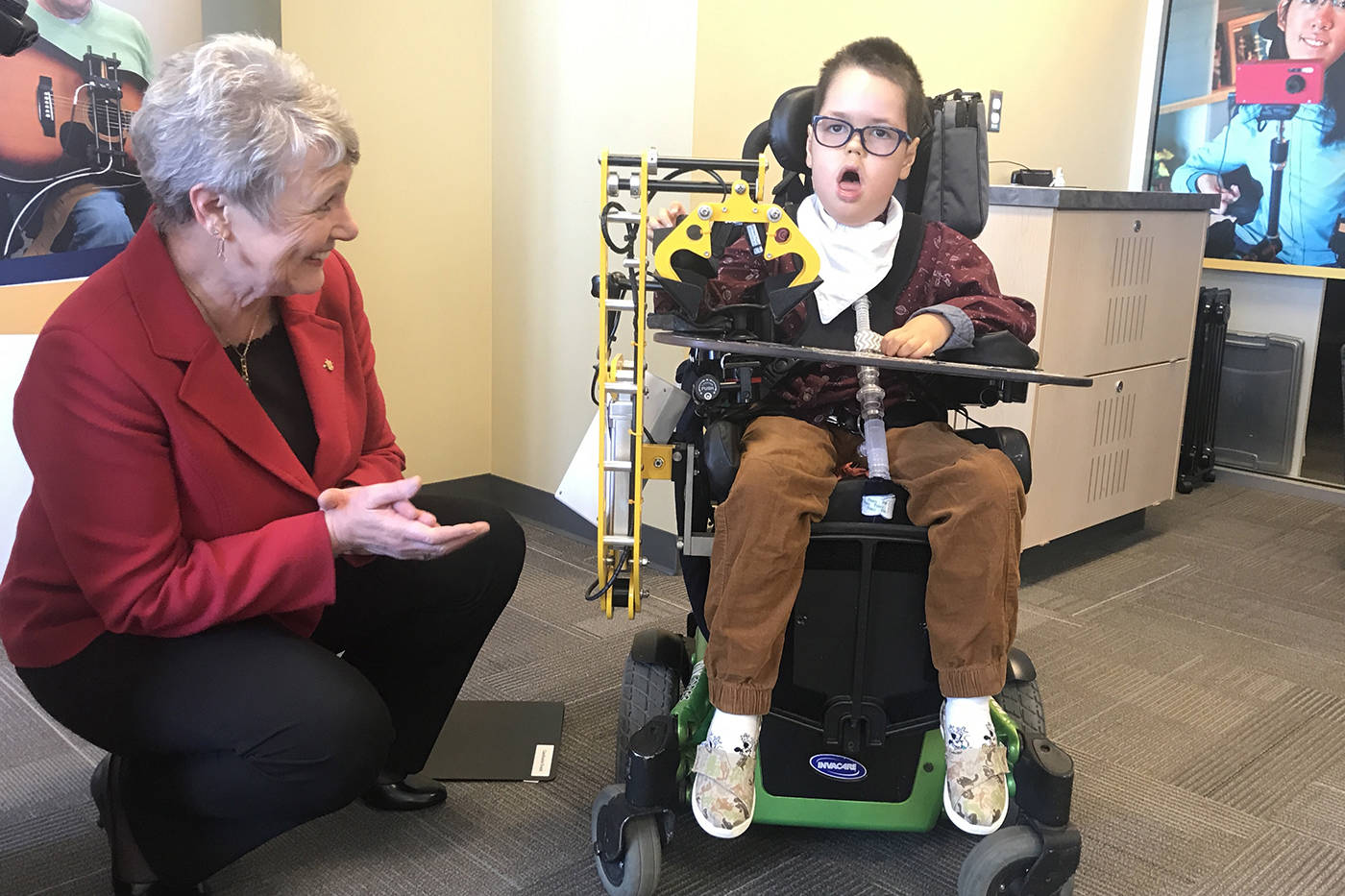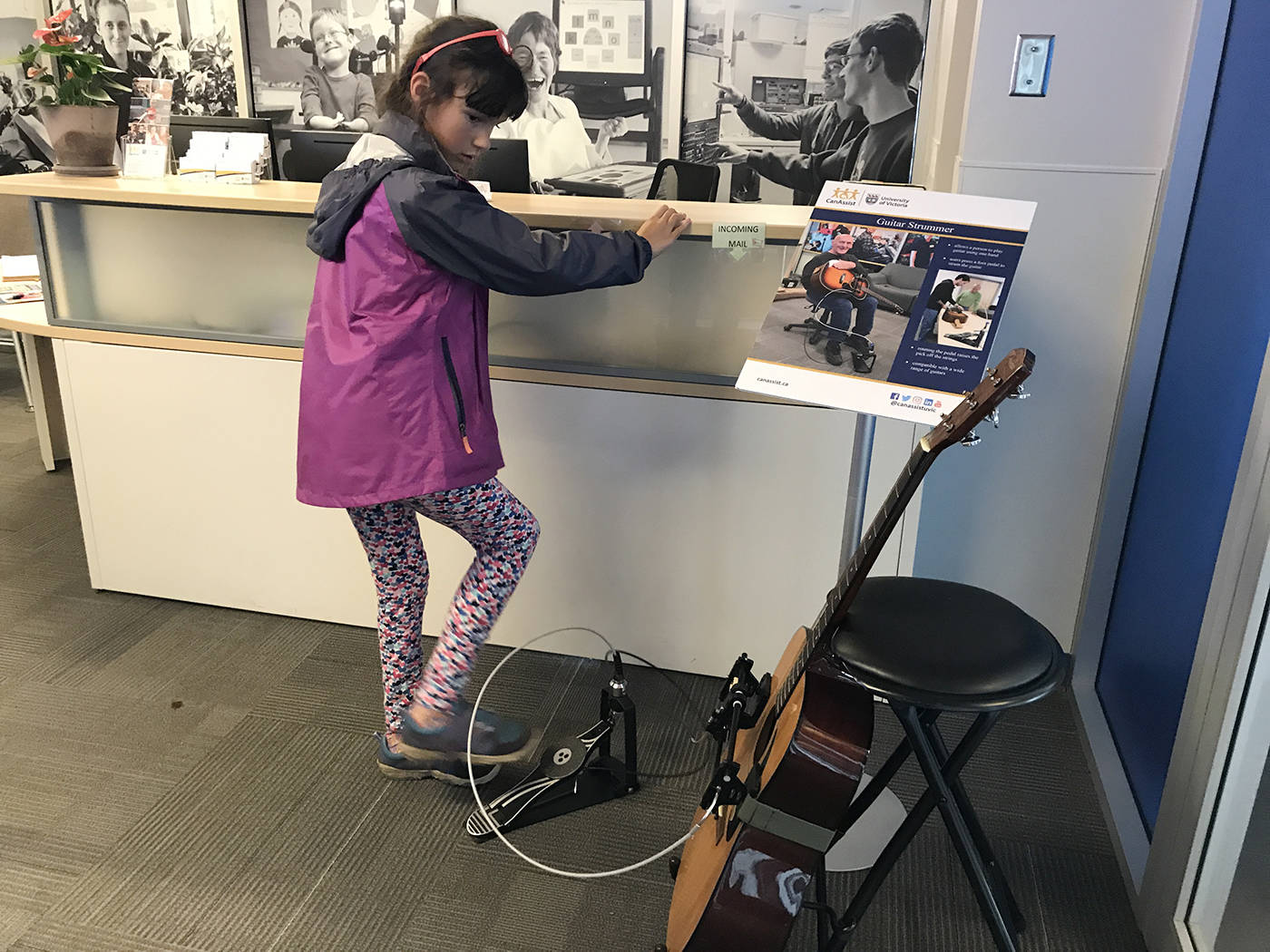Children were jamming, playing video games, and using robotics at the CanAssist centre at the University of Victoria Friday – everyday things that most kids take for granted but this group just gained access to with the help of unique technology.
Katrine Conroy, Minister of Children and Family Development, joined CanAssist staff at UVic on Nov. 16 to see how children with special needs use seven new assistive technologies, that are being delivered to child development centres (CDCs) throughout B.C. in November, with the assistance of a $1.5-million provincial government contribution.
“It touches my heart to know that these technologies are helping children learn important skills and support their independence while they participate in fun recreational activities,” said Conroy.
Ethan shows Katrine Conroy, Minister of Children and Family Development, one of the seven new assistive technologies that have been delivered to child development centres throughout B.C. for children with special needs. #CanAssist @uvic #technology #bcpoli #yyj @VictoriaNews pic.twitter.com/933uTgbJ77
— Keri Coles (@KeriColesPhotog) November 16, 2018
CanAssist worked with the BC Association for Childhood Development and Intervention and CDC staff to pick technologies that would be most useful for children with special needs. Conroy said there was almost 100 per cent input response from the centres, a reflection of how important the project is to kids right across the province.
The seven chosen innovations were demonstrated at Friday’s event – some that focused on mobility, some on play, and some on communication.
ALSO READ: Director of new gallery looks to make art accessible to all
A gaming controller was created that allows children with limited hand function to use popular video-gaming systems, as well as a ball launcher, which allows children who are unable to throw independently to play ball with others, and two children showed off the capabilities of a remote-control car that can be operated by those who do not have the dexterity to use a similar commercial toy.
“This kind of innovation helps children join in where previously their disabilities may have limited their participation and inclusion in community,” said Conroy.
To aid communication, an app was designed which provides a way for children who have difficulty communicating to point to pictures on a tablet to show their choices, and a device that looks like a small, spinning roulette wheel was made that helps children indicate choices and learn how to use an accessibility switch.
A highlight was seeing two children use a mobile music therapy kit that enables those who are unable to play regular instruments to create music independently.
To aid mobility and independence, a robotic grabber was also designed that assists children who do not have the ability to pick up and move everyday objects on their own.
ALSO READ: New UVic buildings expand student housing by 25 per cent
The support from the Ministry of Children and Family Development, allowed CanAssist to refine these seven prototypes originally developed for individual clients, purchase parts, assemble and test the devices, develop user guides, create instructional videos and a website for the CDCs, and ship the technologies to the centres around B.C.
“This project has been a remarkable opportunity to make innovative technologies available that will benefit children with special needs around the province, whether they are located in rural communities or larger urban centres,” said Robin Syme, executive director, CanAssist.
keri.coles@blackpress.ca
Follow us on Instagram Like us on Facebook and follow us on Twitter.




